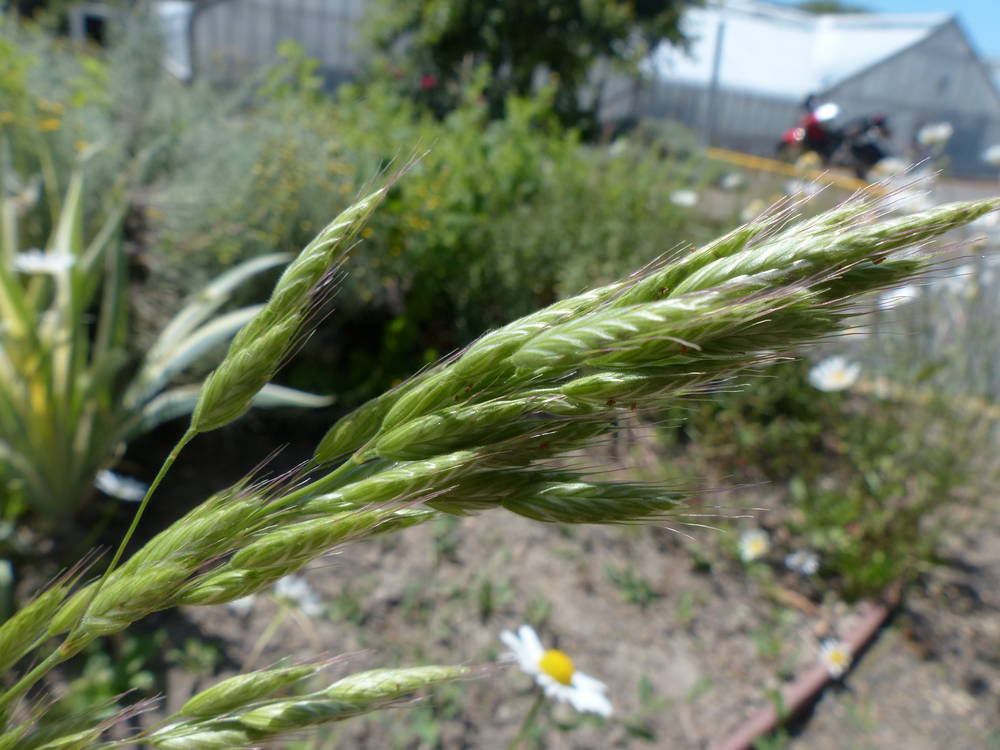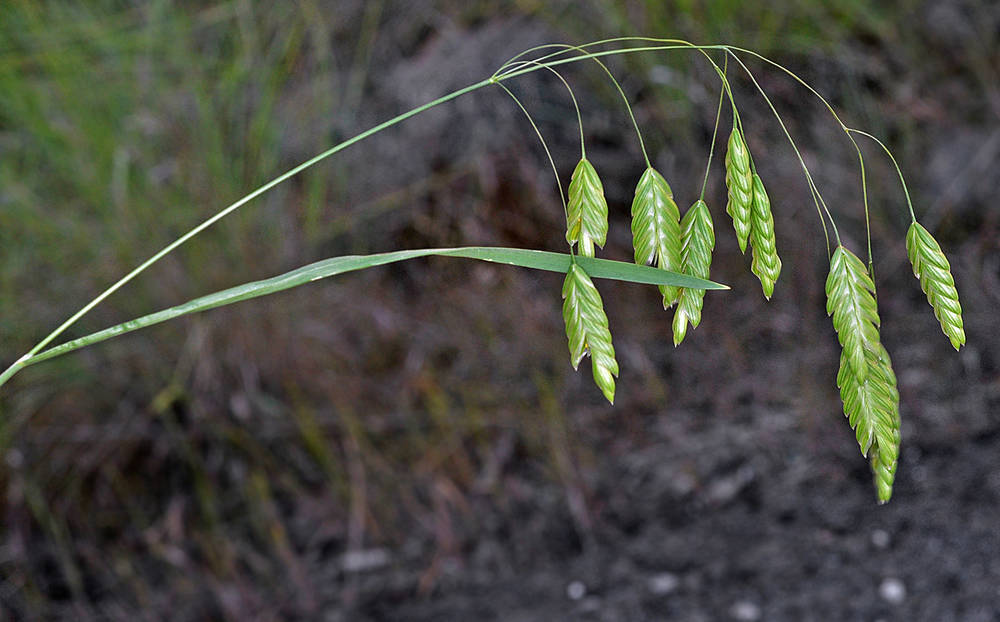Bromus hordeaceus
Bromus briziformis
soft chess
rattlesnake brome
lower sheaths densely pilose; upper sheaths pubescent or glabrous;
blades 2–19 cm × 1–4 mm;
lower surfaces glabrous or pubescent;
upper surfaces pubescent.
sheaths densely pilose;
blades 3–13 cm × 2–4 mm, pilose to pubescent on both surfaces.
1–13 × 1–4 cm; erect, usually ovoid; open at anthesis, becoming contracted and dense, occasionally reduced to 1 or 2 spikelets;
branches usually shorter than the spikelets, ascending to erect; straight or nearly straight.
5–15 × 3–7 cm; open, nodding;
pedicels sometimes longer than the spikelets, curved to reflexed.
(11)14–20(23)mm, lanceolate; terete to moderately laterally compressed, 5–10 florets;
floret bases usually concealed at maturity;
rachilla internodes concealed at maturity.
15–30 × 8–12 mm; ovate, laterally compressed, usually dangling, with 9–15 florets;
floret bases usually concealed at maturity;
rachilla internodes concealed at maturity.
pilose to glabrous;
lower glumes 5–7 mm, 3–5-veined;
upper glumes 6.5–8 mm, 5–7-veined.
smooth or minutely scabrous;
lower glumes 5–6 mm, 3–5-veined;
upper glumes 6–8 mm, 7–9-veined.
equal to or shorter than paleas; thin, weakly inrolled to flat.
about as long as the paleas.
6.5–11 × 3–5 mm, lanceolate, chartaceous, antrorsely pilose to pubescent, occasionally glabrous near the base or throughout, 7–9-veined; hyaline margins abruptly or bluntly angled, not inrolled at maturity;
lateral veins prominent, thickened and raised;
tips rounded to acute; bifid;
teeth shorter than 1 mm;
lemma awns 6–8 mm, usually arising less than 1.5 mm below the lemma tips; straight to recurved at maturity.
9–10 mm long, 6–8 mm wide, inflated, obovate or rhombic; leathery; smooth or scabridulous, obscurely 9-veined;
veins usually not raised and thickened;
margins hyaline, 1–1.3 mm wide, abruptly angled, not inrolled at maturity;
tips acute to obtuse; bifid;
teeth shorter than 1 mm, usually awnless;
lemma awns; if present; to 1 mm, arising less than 1.5 mm below the lemma tips.
0.6–1.5(2)mm.
0.7–1 mm.
=28.
=14.
Bromus hordeaceus
Bromus briziformis
Disturbed areas, degraded grasslands. 0–1900m. All ecoregions except BR. CA, ID, NV, WA; north to AK, south to Mexico, east to Newfoundland and SC; North Africa, southern Europe; scattered elsewhere worldwide. Exotic.
Bromus hordeaceus has been divided into subspecies, two of which may occur in Oregon (B. h. ssp. hordeaceus and B. h. ssp. pseudothominei). Most Oregon specimens, however, cannot be identified confidently to either subspecies.
Disturbed places, roadsides, forest openings, sand dunes, overgrazed rangeland. 0–1800 m. BR, BW, Col, ECas, Lava, WV. CA, ID, NV, WA; throughout North America; southwestern Asia, Europe. Exotic.
Unusual inflated florets make Bromus briziformis unique among Oregon bromes, but it can be confused with Briza maxima. In the latter species, the florets spread more widely, so that the angle between the glumes is almost 180°. Records of B. briziformis west of the Cascades have often been misidentified B. maxima. The dry, mature inflorescences of this species look somewhat like the tails of rattlesnakes and also make a disturbing rattling sound as one walks through a population of ripe plants.
Barbara Wilson, Richard Brainerd, Nick Otting
Barbara Wilson, Richard Brainerd, Nick Otting
- Local floras:
BC,
CA,
OR,
WA
- Local Web sites:
CalFlora,
CalPhotos,
Flora NW,
PNW Herbaria
WildflowerSearch
iNaturalist (observations)
USDA Plants Database
- LBJ Wildflower Center
- SEINet
- Plants of the World Online
- Encyclopedia of Life
- Wikipedia
- Google Image Search
- Local floras:
BC,
CA,
OR,
WA
- Local Web sites:
CalFlora,
CalPhotos,
Flora NW,
PNW Herbaria
WildflowerSearch
iNaturalist (observations)
USDA Plants Database
- LBJ Wildflower Center
- SEINet
- Plants of the World Online
- Encyclopedia of Life
- Wikipedia
- Google Image Search





